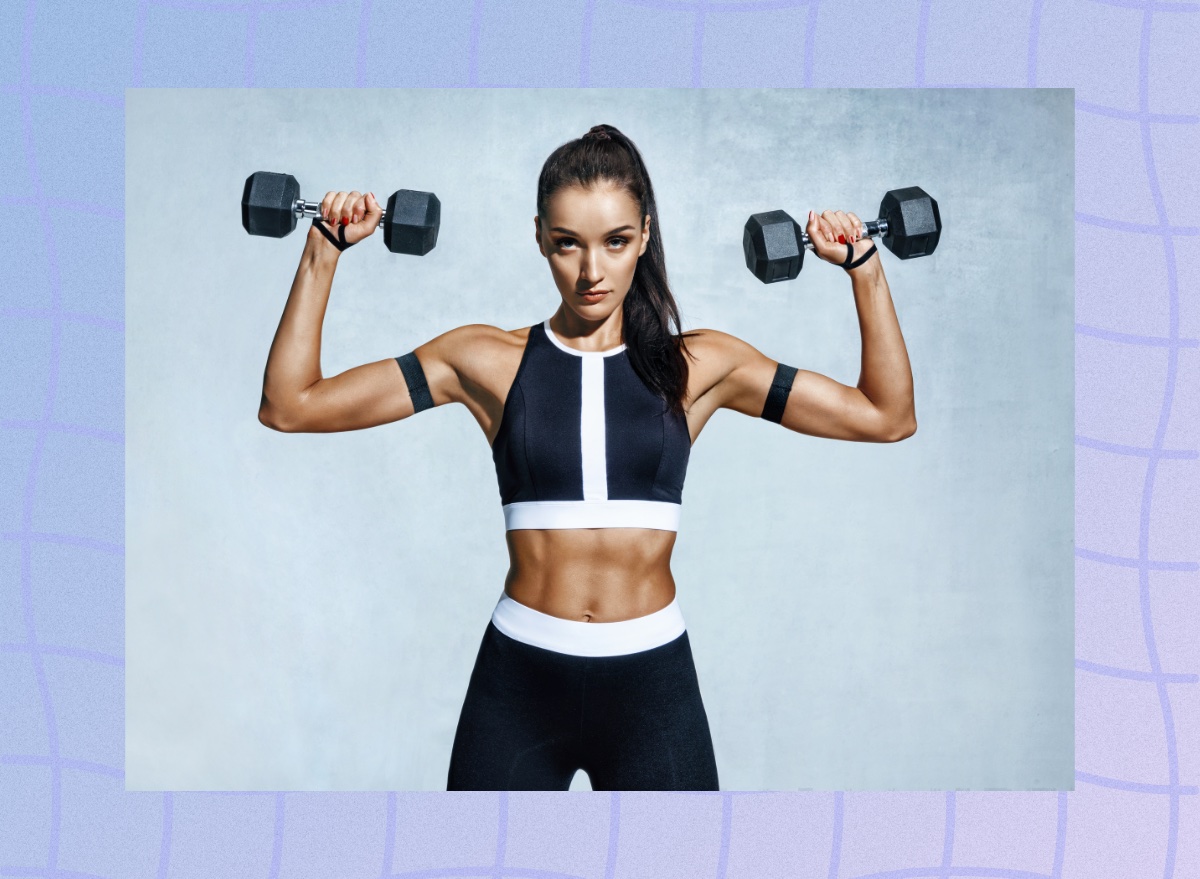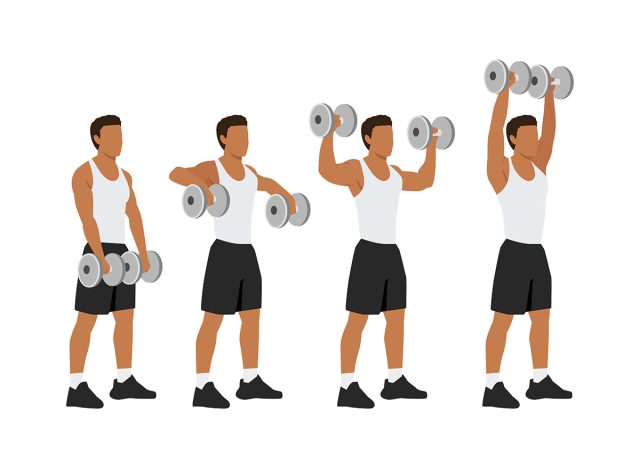3 Simple Moves That Target Hidden Muscle Weakness

Have you ever felt that despite your regular workouts, certain areas of your body still feel weak or unstable? As a retired professional boxer and certified strength and conditioning coach with over 15 years of experience, I’ve helped countless individuals transform their bodies through effective training programs. My diverse background in HYROX, CrossFit, marathons, and football has given me unique insights into what really works for building balanced strength. Read on to discover three lesser-known exercises that can help you target those often-overlooked muscles and improve your overall stability and performance.
Shoulders
The Cuban Press: Your Secret Weapon for Shoulder Health

The Cuban Press is an excellent exercise for targeting rotator cuff and scapula muscles. This move will also target the rear delts which is often neglected in traditional shoulder training.
The Cuban Press is one of the best exercises for strengthening the rotator cuff muscles (supraspinatus, infraspinatus, teres minor, and subscapularis). These muscles play a critical role in shoulder stability, particularly during overhead movements and exercises. It helps improve the mobility and stability of your scapula (shoulder blades). This is crucial because the scapula serves as the foundation for most upper body movements. Poor scapular control can lead to shoulder pain, injuries, and inefficient movement patterns.
By targeting the rotator cuff and other smaller stabilizer muscles, the Cuban Press can prevent common shoulder injuries, such as impingement or rotator cuff strains, which are often caused by muscle imbalances or overloading the larger shoulder muscles without proper support from the stabilizers.
While many people focus on bigger lifts like overhead presses and bench presses, these exercises primarily target the deltoid muscles and might neglect the smaller, stabilizing muscles of the shoulder. The Cuban Press addresses this imbalance, which is essential for shoulder health and stability. The Cuban Press is not just a rehab/prevention move. By improving shoulder stability and rotator cuff strength, it can directly improve your performance in overhead pressing, snatches, and other compound lifts. Over time, shoulder dysfunction (often resulting from muscle imbalances) can affect posture. The Cuban Press can help maintain proper posture by strengthening muscles responsible for pulling the shoulders back and improving scapular retraction.
Thighs
The Copenhagen Plank: Master Your Inner Thigh Strength
The Copenhagen Plank is fantastic for targeting the inner thighs (adductors) and improving hip stability, which is often neglected in traditional leg exercises. The Copenhagen Plank is one of the few exercises that effectively targets the adductors, the group of muscles on the inner thighs. These muscles are often neglected in traditional leg workouts but play a critical role in stabilizing the pelvis and preventing hip and knee injuries.
Strengthening the adductors can also improve athletic performance. As a side plank variation, the Copenhagen Plank not only works the adductors but also strengthens the obliques and core. This improves your ability to maintain proper posture and control during dynamic movements. The plank position helps engage the deeper muscles of the core, including the transverse abdominis, which is essential for stabilizing the spine and pelvis.
This exercise also recruits the glutes and hip stabilizers, particularly the gluteus medius. These muscles help stabilize the hips and pelvis, playing a crucial role in preventing imbalances that can lead to injuries in the lower body. The Copenhagen Plank challenges the muscles responsible for maintaining proper pelvic alignment. A weak pelvic floor and unstable hips can lead to issues like anterior pelvic tilt, lower back pain, or misalignment in the knees. Strengthening the adductors and glutes helps support better posture and more efficient movement patterns.
Many people don’t realize that weak adductors can contribute to a variety of issues, from poor posture to knee injuries. Since the adductors play a role in stabilizing the pelvis, weakness in these muscles can lead to imbalances in the lower body. The Copenhagen Plank isolates these muscles, helping correct any imbalances that may be affecting your squat, deadlift, and overall leg strength. The adductors are essential for movements like lateral shuffling, sprinting, and cutting. Strengthening them through exercises like the Copenhagen Plank will improve your ability to perform dynamic movements with better control, agility, and power, especially in sports that require quick side-to-side motions.
Lower Back
The Jefferson Curl: Transform Your Spine Mobility
The Jefferson Curl is a lesser-known but highly effective movement for improving flexibility and strength in the entire posterior chain, especially the lower back. The Jefferson Curl targets the spinal erectors and helps with spinal mobility, which is key for preventing lower back pain.
One of the primary benefits of the Jefferson Curl is its ability to improve spinal flexion. The ability of your spine to round and stretch forward. Many people lack the mobility to achieve full spinal flexion due to tight hamstrings, lower back muscles, or poor posture habits. The Jefferson Curl specifically works to enhance the mobility of the entire spine, from the cervical to the lumbar regions.
The Jefferson Curl is a great exercise for strengthening the posterior chain, which includes the spinal erectors, hamstrings, glutes, and lower back. These muscles are crucial for maintaining proper posture, stability, and power in many athletic movements.
While it’s primarily a spinal mobility and posterior chain strengthening movement, the Jefferson Curl also requires core engagement. As you lower the weight and flex your spine, the deep core muscles must engage to stabilize the torso and protect the spine.
Many lower back issues stem from poor spinal mobility and lack of strength in the muscles that support the spine. The Jefferson Curl allows you to train the spine through a full range of motion while maintaining control, which helps to prevent stiffness and imbalances that can lead to injuries such as disc herniations or strains. And if you enjoyed this article, don’t miss How Long Your Walking Workout Should Be To Shrink Belly Fat.









